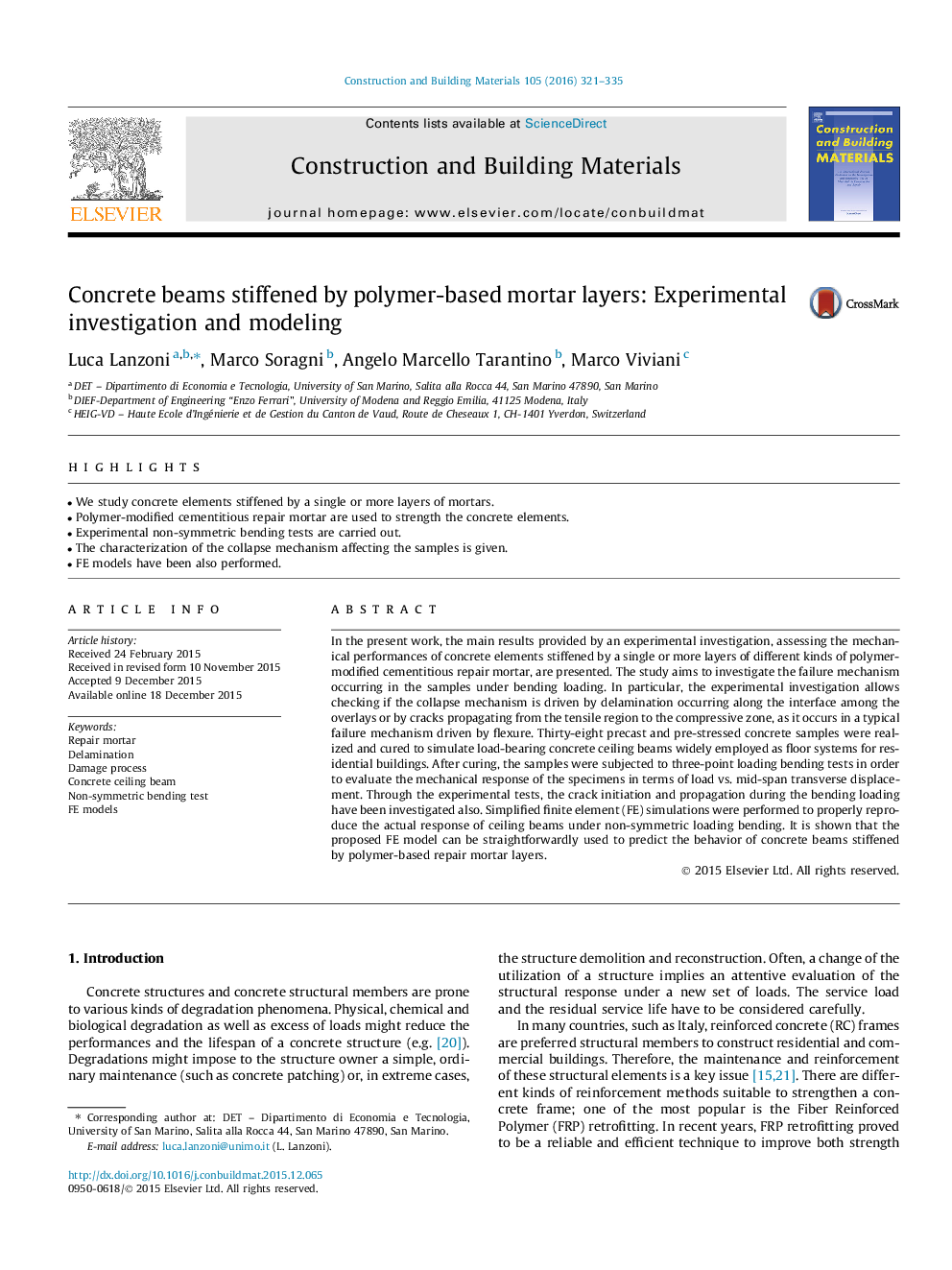| Article ID | Journal | Published Year | Pages | File Type |
|---|---|---|---|---|
| 6719613 | Construction and Building Materials | 2016 | 15 Pages |
Abstract
In the present work, the main results provided by an experimental investigation, assessing the mechanical performances of concrete elements stiffened by a single or more layers of different kinds of polymer-modified cementitious repair mortar, are presented. The study aims to investigate the failure mechanism occurring in the samples under bending loading. In particular, the experimental investigation allows checking if the collapse mechanism is driven by delamination occurring along the interface among the overlays or by cracks propagating from the tensile region to the compressive zone, as it occurs in a typical failure mechanism driven by flexure. Thirty-eight precast and pre-stressed concrete samples were realized and cured to simulate load-bearing concrete ceiling beams widely employed as floor systems for residential buildings. After curing, the samples were subjected to three-point loading bending tests in order to evaluate the mechanical response of the specimens in terms of load vs. mid-span transverse displacement. Through the experimental tests, the crack initiation and propagation during the bending loading have been investigated also. Simplified finite element (FE) simulations were performed to properly reproduce the actual response of ceiling beams under non-symmetric loading bending. It is shown that the proposed FE model can be straightforwardly used to predict the behavior of concrete beams stiffened by polymer-based repair mortar layers.
Related Topics
Physical Sciences and Engineering
Engineering
Civil and Structural Engineering
Authors
Luca Lanzoni, Marco Soragni, Angelo Marcello Tarantino, Marco Viviani,
